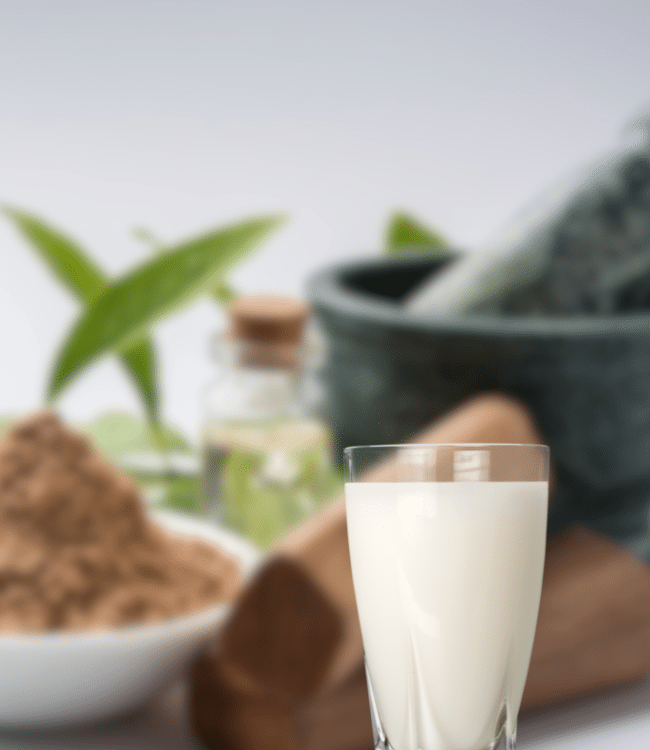Vamanam Ayurvedic Treatnent
Vamanam Ayurvedic Treatment in Coimbatore
Vamanam is one among the five major therapies in Ayurveda, known as Panchakarma. It is a cleansing procedure that helps in removing toxins (vitiated doshas), especially Kapha dosha, from the body. The word Vamana means therapeutic vomiting. In this treatment, specific herbal medicines are given to the patient to induce controlled vomiting. This helps in clearing the upper gastrointestinal tract and lungs, giving the body a fresh start for healing. Vamanam is not like regular vomiting that happens during sickness. It is to be done strictly under the supervision of a qualified medical practitioner, as complications can arise if caution is not exercised before and during the course of the procedure. The process is done step-by-step, including preparation, the actual vomiting procedure, and proper post-care. When done correctly, Vamanam bestows one with good health, especially in the domains of weight loss, skin care and respiratory health

Pure Herbal

Evidence Based

Guranteed Results
Book An Ayurvedic Treatment At Avanika
If you are looking for an Ayurvedic Vamanam Treatment in Coimbatre Book an appointment and get free consultation.
What is Vamanam?
Vamanam is the therapeutic procedure where forceful expulsion of vitiated doshas occurs through the mouth following the administration of Vamana oushadhi (herbal emetic medicines). It is a planned and scientific vomiting process, not to be confused with vomiting due to illness.
This therapy is one of the most effective ways to remove deep-seated toxins and Kapha from the body.
It is typically performed during the spring (Vasanta Ritu) or at a time when Kapha is naturally aggravated, as part of the swasthavritta treatment plan, where the procedure aims at rejuvenation.
However, it can be performed on any day, regardless of the season, when the patient’s condition demands it.
The patient is properly prepared through internal and external oleation and sweating therapy before the actual process is carried out.
Vamanam aims to bring out the accumulated Kapha from the stomach area where it settles. It removes excess mucus, heaviness, and toxins that disturb the body’s normal function. Vamanam also improves appetite, digestion, and mental clarity.
It is not a one-day treatment. It involves several days of preparation, a single day of vomiting, multiple days of recovery and a special diet (samsarjana krama).
Who is Eligible for Vamanam?
Vamanam is not for everyone. A detailed examination of the patient is done before recommending this procedure. It is suitable for individuals with a strong Kapha imbalance or Kapha-type body constitution. Ideal candidates for Vamanam are:
- Physically and mentally fit individuals
- Age group between 16 to 70 years
- People with good digestive power
- Those with Kapha-predominant disorders
Not suitable for:
- Very weak, aged, or very young children
- Pregnant women
- People with heart, liver conditions
- Those with high blood pressure
- Patients with tuberculosis or bleeding disorders
Which diseases are treated by Vamanam
Vamanam is highly effective in diseases caused by Kapha dosha and in certain Pitta conditions when Kapha is associated. By clearing excess Kapha, this therapy also helps to open up blocked channels (srotas) and improves the body’s overall functioning.
Some of the conditions where Vamanam is commonly advised are:
- Bronchial asthma
- Chronic cold and cough
- Sinusitis
- Obesity
- Skin diseases like Psoriasis, Eczema
- Indigestion
- Kapha-type diabetes mellitus
- Nausea, food allergies, and sluggish metabolism
- Allergic rhinitis and respiratory allergies
- Hyperlipidemia (high cholesterol)
- Thyroid dysfunction (Kapha-dominant type)

How to prepare the patient for Vamanam?
Proper preparation of the patient is necessary for the success of Vamanam. There are three main steps before the actual therapy is done:
Snehapana (Internal Oleation)
The patient is given medicated ghee or oil (based on their condition) in increasing doses over a few days. This helps loosen toxins and bring them into the stomach for easy elimination. The goal is to reach proper oleation signs, which are signs like softness of body, proper digestion, and oily stools.
Abhyanga (External Oleation)
On the day before Vamanam, a full-body massage with medicated oil is done. This further helps in mobilising the toxins.
Swedana (Steam Therapy)
After the oil massage, the patient is given steam using a herbal decoction. This dilates the body channels and makes the doshas ready to be expelled.
In the afternoon, food that increases Kapha (Kaphotkleshakara ahara), such as curd, sweets, or heavy foods, is given to provoke Kapha and bring it to the stomach area.
Procedure
You will be asked to wake up early, usually by 5:00 to 5:30 am. The therapy typically begins around 6:00 am. Start your day with a calm and peaceful mind.
First, you will undergo a mild full-body oil massage (Abhyanga) followed by herbal steam therapy (Swedana). This helps in loosening the toxins and encouraging Kapha to move toward the stomach, where it can be expelled easily.
After this, you will be taken to the Vamana treatment room. You’ll be seated comfortably on a chair that is positioned in front of a large basin or bucket to collect vomit. You should enter the room with a pleasant and calm mindset.
Before starting, a small prayer is often offered for success and well-being during the therapy.
All preparations should be completed by early morning (around 7 am), and the actual Vamanam procedure is done step-by-step as follows:
Materials Required:
- A large basin or vessel to vomit into
- Medium-sized vessels (2) for preparing and storing medicine
- Steel glasses (250 ml capacity – 2)
- Tablespoon – 2
- Grinding stone
- Stool – 1
- Chair with armrest
- Cotton cloths – 2
- Hot water bath vessel
- Stove
- Karpooradi or Haridradi varthi for Dhoomapana
- Medicated oil
Vamana Dravyas (Medicines Used):
- Madanaphala choorna (Emetic Nut) – 3 to 5 grams
- Vacha choorna – 5 grams
- Yashtimadhu choorna – 7.5 grams
- Honey – 15 grams
- Saindhava lavana – as required
- Milk – 4 to 6 litres (lukewarm)
- Hot water – for sipping
Step-by-step Procedure:
- You are advised to be seated on a chair facing the vomiting basin kept on a stool.
- First, 6 glasses of lukewarm milk are given. This helps in easy vomiting and protects the inner lining of the stomach.
- Then, the emetic medicine is mixed and administered orally.
- You will be advised to sit calmly and focus on the sensation of nausea.
- Signs of impending vomiting include:
- Salivation
- Heaviness in the chest
- Sweating
- Goosebumps
- Nausea
- As soon as the signs appear, vomiting starts.
- Another person will support the your head and side body while he bends forward and vomits into the basin.
- A gentle upward massage is given over the back and stomach to ease the process.
- If vomiting doesn’t occur naturally within 48 minutes, you may tickle your throat using a clean finger or a soft tube carefully.
- In between, more warm milk or water may be given as needed.
- Vomiting should be continued until the signs of proper Vamana appear. This includes:
- Pitta comes at the end (yellowish or greenish bile)
- Feeling of lightness in body and chest
- Sweating
- Clear throat
- Exhaustion and relief
Duration and Monitoring
The number of rounds varies for each person and is decided by the physician based on:
- The content and appearance of the vomitus
- Your physical strength and comfort
- Your mental clarity and alertness
Usually, 3 to 7 rounds are done. It is not necessary to complete all 7. Once the physician observes the proper cleansing signs, they may decide to stop the therapy.
Complications Management
If the procedure is not done properly or in unsuitable individuals, complications may occur. Some common ones and their Ayurvedic management are:
- Vomiting of blood (Haematemesis):
– Treated with Laja tarpana (nourishing gruel), cold milk - Feeble pulse, dizziness, fainting:
– Treated with Siddha makaradhwaja mixed with honey and betel juice
– Drakshadi kashaya and Dhanwantharam gulika - Inadequate vomiting (Heena Vega):
– Given Pippali choorna, Amalaki choorna, Sarshapa choorna, and Lavanodaka (salt water)
Post Operative Procedure
After Vamanam, the patient washes his face and takes rest. The following steps are important:
- Dhoomapana – Herbal smoke inhalation using Haridradi or Karpuradi Varthi to clear leftover Kapha.
- Complete physical and mental rest for 1–3 days.
- Sometimes, in the afternoon, you may be advised to undergo Nasyam, a nasal cleansing therapy using herbal drops or juices. This further helps in clearing the head region.
- Samsarjana Krama – Special diet plan starting with thin rice gruel (Peya), then thicker gruel (Vilepi), and finally normal food over 3–7 days. The digestive fire (Agni) is weak after Vamanam, so a light diet is crucial for recovery. So by around 9:00 am, if you feel tired or hungry, a special drink or light rice gruel will be given to provide gentle nourishment. When you feel hungry again later in the day, light food like porridge or thin rice soup will be served.
What to Expect After the Procedure
- You may pass loose stools or have mild diarrhoea, which is completely normal.
- Some people may also vomit once or twice again after returning to their room. This is not a complication; it shows that the body is continuing to cleanse itself.
- If you are unable to vomit at all during the procedure, your physician will assess the situation and may use other Panchakarma methods to support detoxification, such as Virechana (purgation) or other internal medicines.
Throughout the Vamanam process, the doctor and therapists will stay with you, giving instructions and ensuring that you are safe and comfortable. Everything is done gently and professionally.
Dos and Don'ts
Do:
- Follow pre and post-procedure instructions carefully
- Take light and easy-to-digest food after the treatment
- Take rest for a few days
- Keep your mind calm and avoid stress
- Report all symptoms to your physician during and after therapy
Don’t:
- Do not eat heavy, oily, or spicy foods immediately after Vamanam
- Avoid physical exertion, traveling, and sexual activity for a few days
- Do not sleep during daytime after the procedure
- Avoid cold exposure, loud noises, and emotional stress
What are you waiting for...
Book an Appointment
Hours & Contact
28A Bharathi Park 7th Cross, Saibaba Colony, Coimbatore
641043
+9142229 69555
+9189039 69555
info@avanikaayurvedic.com
Open All Days 7:00 AM -7:00 PM
